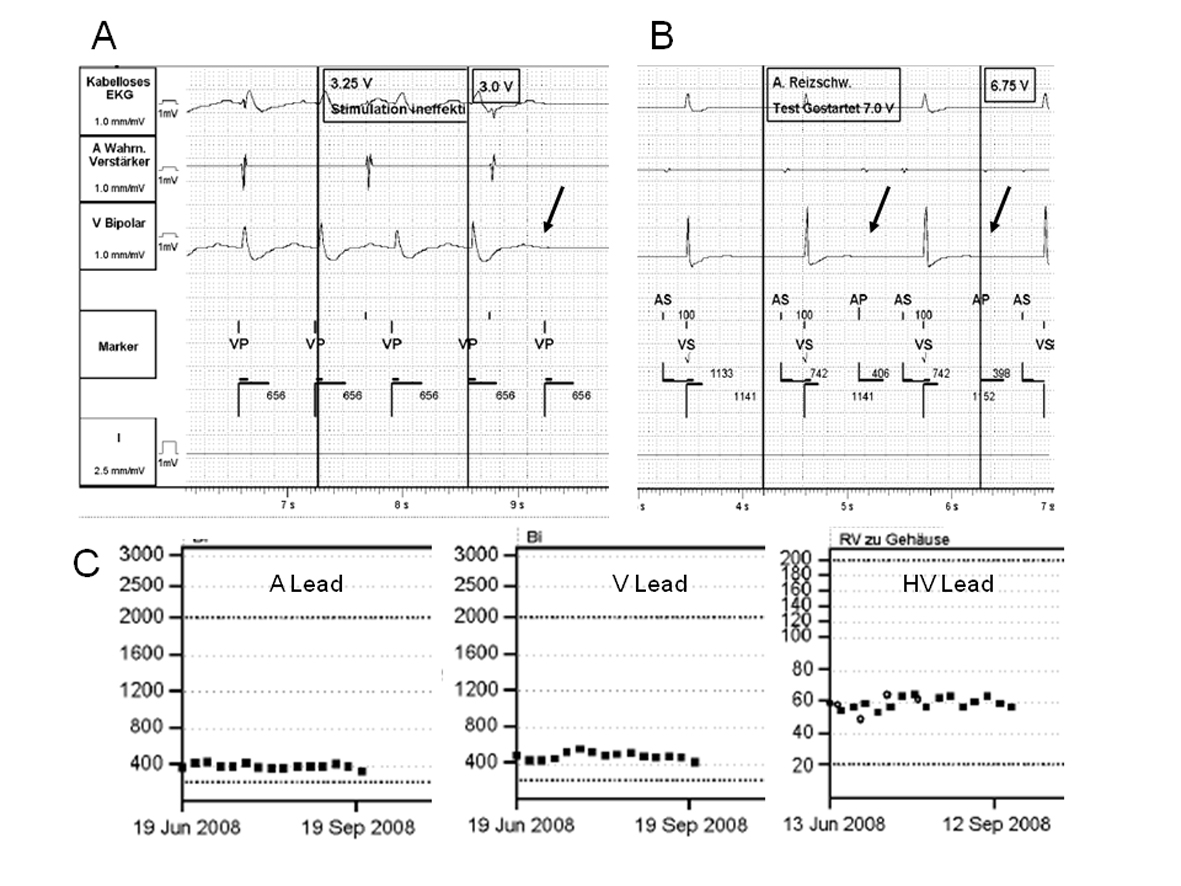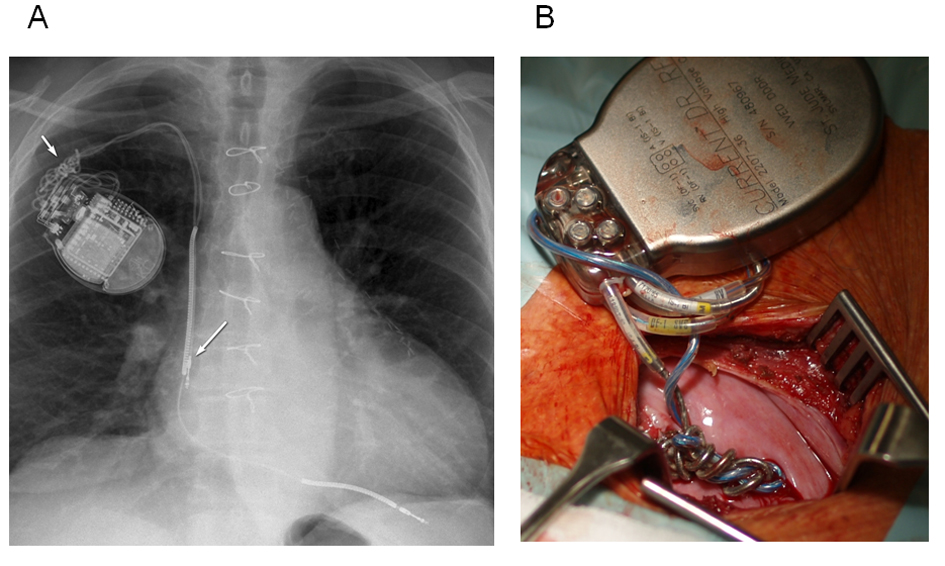
Figure 1. (A) The printout shows loss of capture at 3.0 V @ 0.5 ms during ventricular threshold testing suggestive of subacute increase of pacing threshold in ischemic cardiomyopathy. (B) Strip shows no capture of atrial pacing at maximum output of 7.0 V together with clearly reduced amplitude of the intrinsic atrial signal due to farfield sensing of the retracted electrode. (C) The impedance values of the atrial, ventricular and shock lead remained within the normal range despite the threshold problems.
